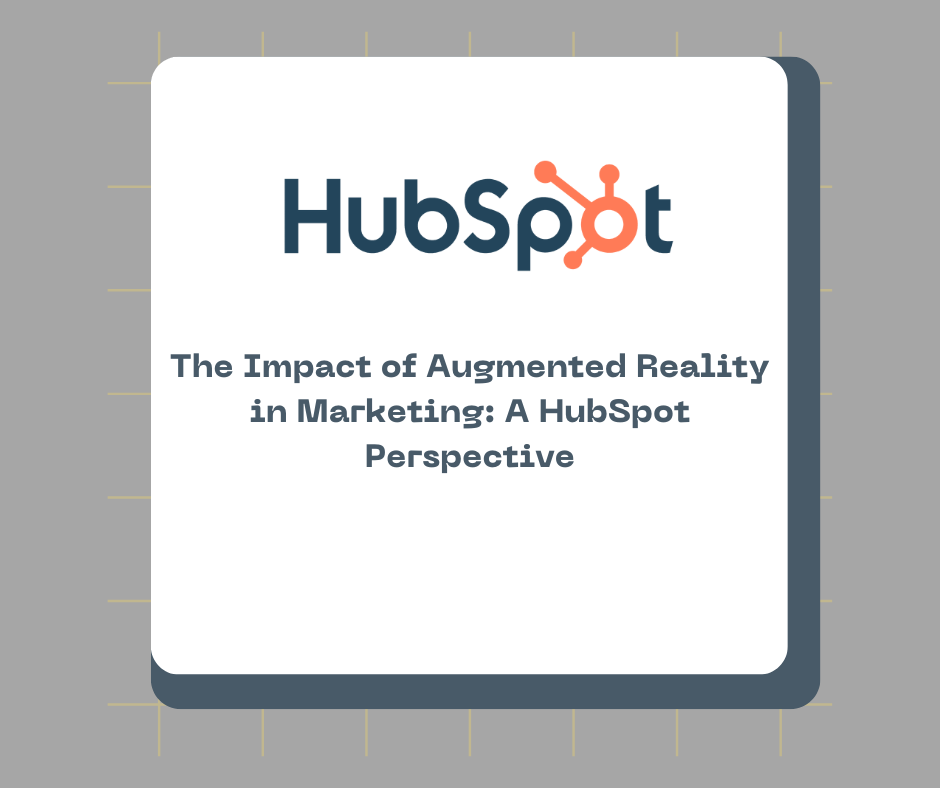In recent years, augmented reality (AR) has emerged as a game-changing technology in various industries, with marketing being one of the most impacted. The integration of AR provides an interactive and immersive experience that transcends traditional advertising, allowing brands to engage with consumers in innovative and memorable ways. HubSpot, a leader in inbound marketing and CRM technology, recognizes the potential of AR and supports marketers in harnessing its power. This article explores the impact of AR on marketing from a HubSpot perspective, detailing how businesses can leverage this technology to enhance their marketing strategies.
Understanding Augmented Reality in Marketing
Augmented reality overlays digital information—like images, sounds, and other media—onto the real world in real-time, typically using a smartphone camera or AR glasses. This blend of digital and real-world elements creates engaging and interactive experiences directly in the user’s environment, making AR a powerful tool for marketers looking to bring their products and services to life.
The Advantages of AR in Marketing
-
Enhanced Engagement: AR creates compelling, immersive experiences that capture the attention of users more effectively than traditional 2D media. By engaging customers through interactive content, brands can foster deeper emotional connections, enhancing customer engagement and retention.
-
Improved Conversion Rates: AR can significantly shorten the consumer decision-making process. For example, AR allows customers to visualize products in their own space before buying, as seen in furniture and decor apps that place products in a customer’s home environment. This immediate, tangible experience can dramatically increase conversion rates.
-
Unique Brand Experiences: AR offers a platform for creative and differentiated marketing campaigns that can distinguish a brand from its competitors. Whether it’s through interactive games or virtual try-ons, AR can provide unique brand experiences that are not only fun but also highly shareable.
-
Personalized Marketing: With AR, companies can offer personalized experiences that cater to individual customer preferences, enhancing the effectiveness of their marketing efforts. Personalization can range from changing the color of a car to visualizing how a makeup product would look on a user's own face.
Integrating AR with HubSpot’s Tools
HubSpot provides various tools that can support the integration of AR into a company’s marketing strategy. Here’s how businesses can use HubSpot to leverage the power of augmented reality:
1. Data-Driven Insights
HubSpot’s CRM collects and analyzes customer data, which can be incredibly beneficial when designing AR experiences. Understanding customer behaviors, preferences, and engagement patterns allows businesses to create more targeted, relevant AR content that resonates with their audience.
2. Content Management
AR requires the creation of dynamic digital content, which can be managed effectively using HubSpot’s Content Management System (CMS). The CMS can store and organize all digital assets used in AR applications, ensuring that they are easily accessible and can be updated as needed.
3. Personalized Marketing Campaigns
Using the segmentation and automation features in HubSpot, businesses can personalize AR experiences at scale. For example, marketers can send personalized AR-enabled email campaigns that invite users to engage with AR content specifically tailored to their interests or previous interactions with the brand.
4. Social Media Integration
Social media platforms are a popular venue for AR, particularly with features like Instagram’s AR filters. HubSpot’s social media tools can help schedule and analyze campaigns that incorporate AR content, ensuring that they reach the intended audience and achieve desired engagement levels.
5. Performance Analytics
After deploying AR experiences, it's crucial to measure their impact. HubSpot’s analytics tools can track various metrics such as user engagement, session duration, and conversion rates, providing insights into the effectiveness of AR campaigns and helping marketers refine their strategies.
Challenges and Considerations
While AR offers numerous benefits, there are challenges to consider:
-
Technical Complexity: Developing AR experiences requires technical expertise in AR development platforms. Businesses may need to invest in specialized skills and technologies.
-
High Costs: Creating high-quality AR content can be costly, especially for small to medium-sized enterprises with limited budgets.
-
User Adoption: For AR campaigns to be successful, users must be willing and able to use AR technologies, which often requires them to have access to the latest smartphones or gadgets.
Conclusion
Augmented reality is transforming marketing by creating unique, engaging, and personalized brand experiences. HubSpot’s comprehensive suite of tools can help marketers effectively integrate AR into their digital marketing strategies, manage content, analyze performance, and ultimately drive higher engagement and conversion rates. As AR technology continues to evolve, its integration into marketing strategies represents a critical frontier for innovative brands looking to make a lasting impression in the digital age.
Schedule your training session here and comment “Need Training” on the request form.

Comments